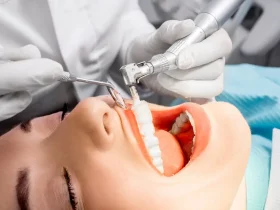Nurse negligence is a hidden danger in the healthcare industry that can lead to medical errors, patient injury, and other consequences. Poor training or lack of oversight can contribute to unsafe nursing care practices, which are often difficult for patients and their families to recognize.
In this article, we will explore warning signs of nurse negligence in healthcare facilities and discuss strategies for avoiding these risks and developing safe systems of care. We will also provide tips on how you can spot these problems before they become more serious issues.
Warning Signs of Nurse Negligence
Many signs of nurse negligence can be difficult to spot, but a few key indicators may signal something is amiss. These warning signs include:
- Poor communication and documentation–Incorrect or incomplete patient records can mean that critical information is not communicated between healthcare team members, leading to errors in diagnosis and treatment. In addition, nurses should enter accurate notes on time about their patients’ health statuses to ensure continuity of care.
- Delayed or missed treatments–Nurses should always be aware of their patient’s needs and provide timely, appropriate care. If this is not happening, it can be an indication that something is wrong.
- Unsanitary conditions–Patients may be exposed to dangerous pathogens and infections if a healthcare facility is not adequately cleaned and disinfected.
- Errors in medication administration–Nurses must be extremely accurate in administering medications, as too much or too little of a drug can have serious consequences for the patient.
- Poor organization and time management–When nurses are overwhelmed with duties, they may become distracted or make more mistakes. Poor organization can lead to errors in care that could result in medical harm.
Strategies for Avoiding Nurse Negligence
It is important to ensure that nurse negligence does not occur in your healthcare facility. Here are a few strategies you can use:
- Ensure proper training–Nurses should be properly trained in all aspects of patient care, including medication administration, documentation, and communication. Proper training will help reduce the risk of errors and medical harm.
- Create clear protocols–Develop a set of protocols and policies that are clearly outlined and communicated to all staff members. This will help ensure that everyone is on the same page in terms of providing safe, efficient care.
- Encourage teamwork and communication–Nurses should be encouraged to discuss any questions or concerns they have with their colleagues. This can help them stay informed about the latest medical advances and any changes in the patient’s condition.
- Conduct regular audits–Regularly audit nurses’ performance to identify areas where improvement is needed. This will help ensure that they are providing safe, high-quality care and reduce the risk of errors or negligence. For instance, in Columbus, Ohio, nursing home neglect is a serious issue and audits should be conducted to ensure all staff members are providing safe, effective care.
How to Identify Nurse Negligence and Avoid Risk
It is important to be aware of the warning signs of nurse negligence and take steps to reduce the risk in your healthcare facility. Educate yourself on the symptoms of medical malpractice, such as improper care, delayed or missed treatments, unsanitary conditions, and errors in medication administration.
Take action if you suspect something is wrong by speaking with the nurse or supervisor. If necessary, contact your state’s Board of Nursing or an attorney who specializes in medical malpractice cases. Remember that prevention is the best approach to avoiding nurse negligence and ensuring safe, high-quality care for all patients.
Understanding the warning signs of nurse negligence and taking steps to avoid these risks can help ensure that your healthcare facility provides safe, effective care for all patients. Follow the strategies outlined in this article to help create a safe system of care and reduce the risk of medical harm.










